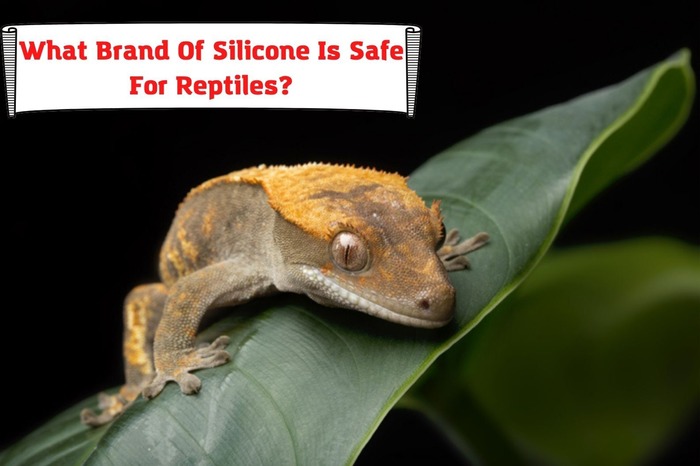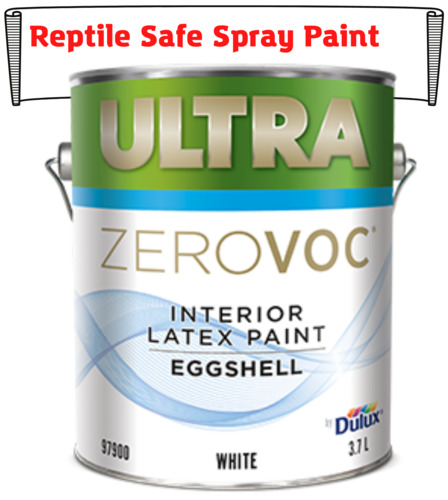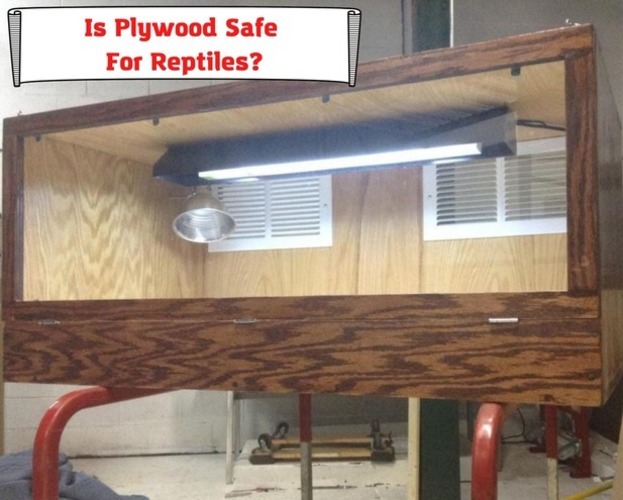A terrarium contains a large chunk of your pet’s world. It is where they sleep, play, rest, and eat. Some pets even hibernate in their terrariums during the colder months.
Our pets, just like us, require constant stimulation in order to be at their best. A dull environment might cause them significant boredom, stress, and in extreme cases, depression.

Fake rocks are a great way to add novelty to their lives. With the rocks, there will always be one new thing to discover that keeps their blues at bay.
What do you need to know before using styrofoam in your terrarium?
Styrofoam is a clear, hard, and brittle material made from styrene. The styrene commonly used to make styrofoam is sourced from petroleum byproducts.
Styrofoam is made by blowing gases into it while hot. This makes it expand into foam that mainly consists of air, thereby making it a poor heat conductor. In simpler terms, styrofoam is an extremely lightweight material that has excellent insulating properties.
How to choose the right styrofoam for your terrarium?
The choice and quantity of styrofoam you use will depend on the complexity of the design of your fake rocks.
If you are making a few small rocks, you might require less styrofoam than someone making a whole rocky background for their terrarium.
A complex design may demand layering the styrofoam into sheets, which will inevitably increase the quantity of styrofoam you need for your project. Layering might also require you to explore styrofoam with different shapes, sizes, and thicknesses.
At the end of the day, it is important to search for the styrofoam that best fits your design. It is good practice to start out with a little more styrofoam than you require. This way, you have a little extra at hand in case you make a mistake or if you want to change your design.
Why should you use Styrofoam for your fake rocks?
Using styrofoam provides an endless range of options for customization. Styrofoam comes in different sizes, shapes, and thicknesses, which allows you to be as creative and expressive as you want as you create a home for your pet.
Styrofoam is an easy material to work with. It can be easily cut and shaped to fit the dimensions of your terrarium. You don’t have to worry about taking it apart if you make a mistake. Simply cut it away as you go and work at your own convenience.
An added advantage of making fake rocks out of styrofoam is insulation. Styrofoam allows very little heat to pass through it. Depending on the size and expanse of your design, you could maintain the heat levels in your terrarium and cut your heating costs by half. Talk about having your cake and eating it too!
Styrofoam is also a good choice for fake rocks because it is highly moisture-resistant. It can withstand prolonged periods of moisture exposure without deteriorating in shape, size, or structure.
Instructions for making fake rocks using styrofoam
Step one: Assemble your tools
Before you get started on making the rock of your pet’s dreams, you will have to gather some essential tools. The following is a list of what you will require;
- Cardboard
- Carving knife
- Glue
- Paintbrush
- Grout
- Sealant
Step Two: Create your blueprint
First things first, on a piece of paper or cardboard, draw a concept of the kind of rock you would like to create. Maybe you envision a cave or a basking rock_Whatever it is, this is particularly helpful since putting the ideas down may help you visualize the design better.
Take the dimensions of the area your rocks are supposed to cover. If you are making rocks with a small area of coverage, such as pebbles, map out a suitable area for them in your terrarium, and estimate a size that will fit.
Trace the blueprint on your paper onto your styrofoam sheet. Use a carving knife to cut away undesired edges on the styrofoam until you achieve a natural shape.
Place the paper or cardboard cutouts in the terrarium to ensure that they fit their intended areas. Repeat the process for as many layers as you require.
Step Three: Building the rock.
Once you have ensured the pieces fit in the terrarium, it is time to glue them together. It is advised that you leave enough room for any grout or foam that you might use.
Refer to your blueprints and carefully glue the sheets of your styrofoam together. You can add to this slowly. Ensure to spread out the glue thoroughly between any layers, and press down at the corners of your styrofoam to ensure they are stuck.
Don’t be afraid to get your hands dirty at this step. The more thorough you are, the better.
Step Four: Fixing the gaps.
Go through your laid styrofoam, checking for any gaps or holes you might have missed while gluing.
An expanding foam insulator might come in handy in this step to plug these gaps, pin holes, or crevices. The insulator could also be used to introduce more character to your design.
Allow enough time for the expanding foam to dry completely before proceeding.
Step Five: Carving
Confirm that your working area is dry, then using a trusted sharp knife, carve the foam into your desired shape.
Most terrarium owners prefer carving the styrofoam into a natural look. You don’t have to get too detailed, but shaping the foam to closely resemble your desired final look will make grouting easier.
Step Six: Grouting
Follow the instructions to mix your chosen grout to the letter. Add in the color of the dye you want to use. The grout will have a lighter shade of color when dry.
Mix in small amounts of grout depending on your use. Too much grout might harden before you have a chance to use it all.
Prepare a light and thin layer of grout for your first coat. It should have a watery appearance. Spread it generously over your set styrofoam with your paintbrush. Try as much as you can to cover any pinholes and gaps you notice.
Give your project 24 hours to dry. Apply the second coat. This coat should be thicker than the first.
Allow another 24 hours for drying, then apply the third and thickest coat of grout over your project. After three coats, the project should look like you envisioned it. The color should also be consistent with the shade you want. If this is not the case, you can apply a fourth coat.
To make your rock even more realistic, sprinkle play sand over your final coat of grout while it is still wet.
Step Seven: Applying sealant
Sealing your project is the most crucial step. Without a protective layer of sealant, your styrofoam rock will be susceptible to elements that may cause it to weaken or affect its performance.
Use your paintbrush to apply three consecutive coats of sealant. Remember to allow each coat to dry before proceeding with the next. Cover all holes and crevices fully.
After applying the final coat, leave your fake rock in a safe, airy place to dry out.
Place the rock in its proper place in the tank, sit back, and enjoy watching your pet thrive.
Is styrofoam safe for pets in a terrarium?
Styrofoam is generally safe for use in a terrarium. It helps maintain the terrarium at appropriate heat levels, keeps moisture out of the terrarium, and can withstand prolonged use.
However, it can pose some risks to our pet companions when not properly sealed.
When left exposed, pieces of styrofoam might come apart from scratching or wear and tear. One ball of styrofoam will not affect the pet, but constant ingesting might lead to poisoning. The pieces of styrofoam could also cause suffocation in your pet through choking.
If your styrofoam is showing through or your pet ingests it, first take out your pet from the terrarium. Observe them to find out whether a visit to the vet is necessary. Remove all styrofoam balls you can see, and repeat the process of sealing.
Most brands of styrofoam sold are safe, but there is always the risk of buying a brand that uses dangerous chemical additives during the manufacturing process. When such types of styrofoam are constantly exposed to moisture, small amounts of such chemicals may leach into the soil or water.
Any terrarium owner interested in using styrofoam to make fake rocks should conduct thorough research on the styrofoam they intend to use.
Conclusion
Styrofoam is an excellent choice for any pet owner who wants to be hands-on with creating a home for their pets. It is easy to cut and shape and is extremely lightweight.
It is also made from very durable material that doesn’t absorb moisture easily, making it perfect for some highly humid terrariums.
To enjoy all the benefits styrofoam offers, pet owners must ensure that they seal the styrofoam properly because exposed edges might pose a significant risk to their pets.
Overall, styrofoam is perfect for any pet owner looking to DIY fake rocks for their terrarium.
- Pacman Frog Looks Deflated – What’s Wrong and What to Do? - August 7, 2023
- How to Put Snake Back in Cage after Feeding? Important Concerns - July 31, 2023
- Repta Boost: Instruction, Considerations, Ways to Use - July 24, 2023



